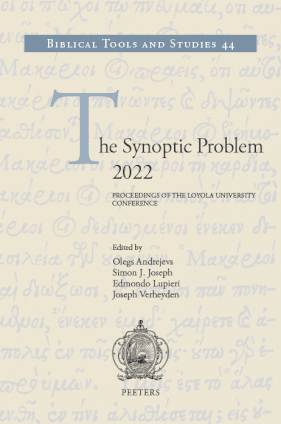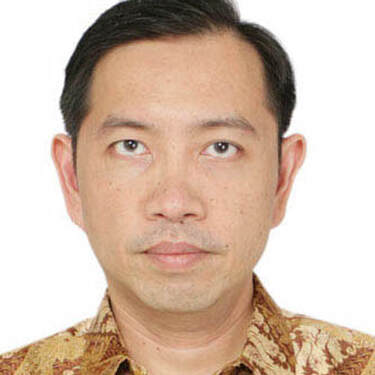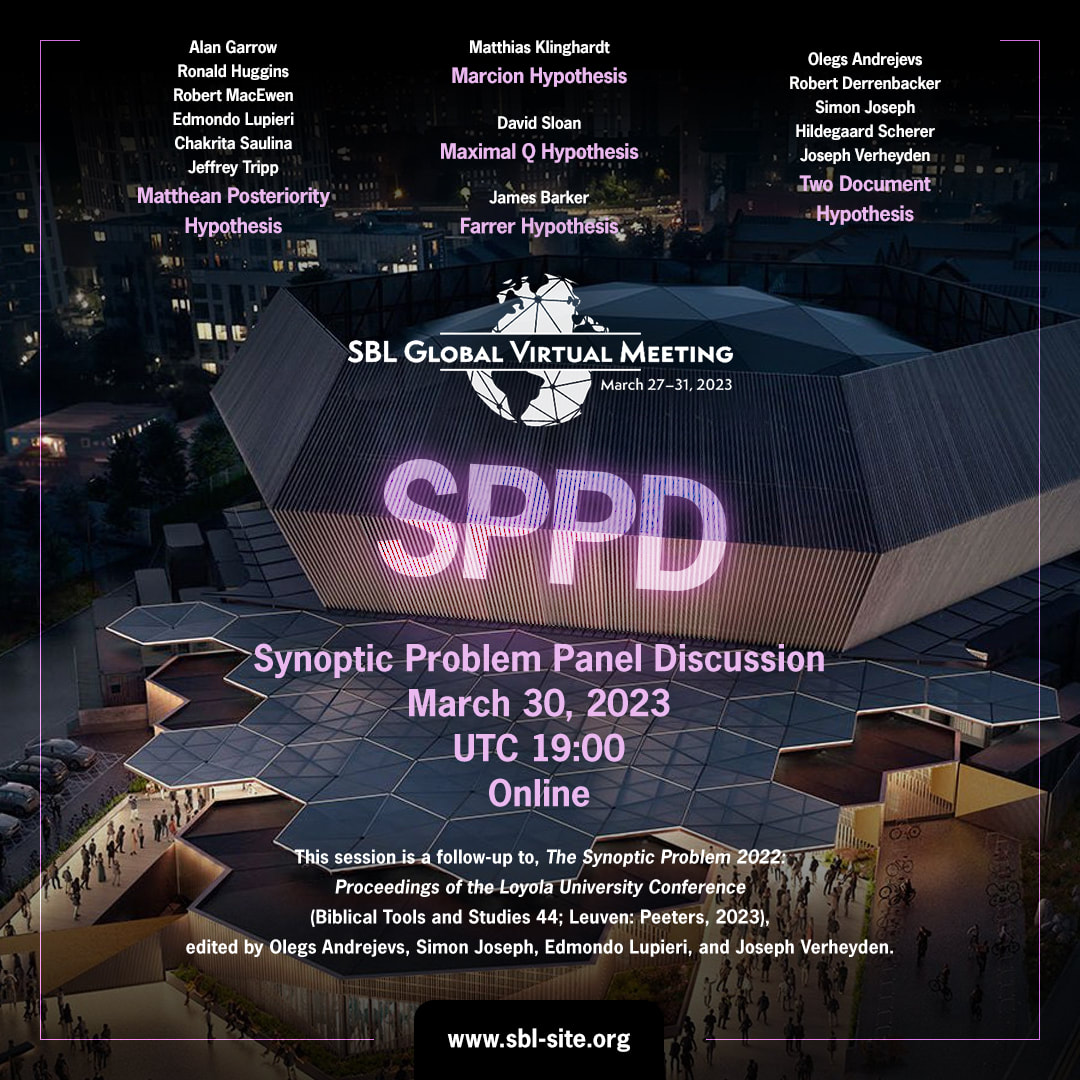| Alan Garrow Didache |
the problem page
|
One of the most frustrating passages in Luke's Gospel occurs in the story of the Road to Emmaus: Luke 24.26-27 If only Cleopas, or his companion, had taken notes of Jesus' tour through Scripture. Something similarly frustrating occurs early on in Mark's Gospel. Mark 1.21-22 When Matthew encounters this omission in Mark he responds with the Sermon on the Mount (inserted into the space between Mark 1.21 (combined with other scene-setting verses) and Mark 1.22).
If Matthew used Luke, as proponents of the MPH propose, then maybe he had a similar reaction in response to Luke 24.26-27? Could this be why Matthew presents virtually every major event in Jesus' life as a fulfilment of Scripture?
1 Comment
A few days ago I tried asking a related question in an AMA with Bart Ehrman: Robert Derrenbacker recently wrote: Bart's full answer can be found in the clip posted above. The original context is Reddit/AcademicBiblical/BartEhrman-MatthewAMA
The arresting thing about this answer is that (after explaining the Q Theory) Bart offers a reason why he thinks Luke did not use Matthew. What he doesn't go on to do is offer a comparable reason why Matthew could not have used Luke. This might be because the mechanics of Matthew's use of Luke are closely parallel to the mechanics of Matthew's use of Q (which Bart evidently doesn't find problematic). Without a specific reason why Matthew could not have used Luke, Bart's belief in Q has no rational basis. His concluding argument, "nobody thinks that", is not just bad logic it is also demonstrably untrue. See also: Swinging big and swinging blind: Bart's extra gamble [1] Robert Derrenbacker Jr., '"Unfinished" Mark "Replaced" by Matthew and Luke? Some Recent Studies and their Implications for the Synoptic Problem', in The Synoptic Problem 2022: Proceedings of the Loyola University Conference, Olegs Andrejevs, Simon J Joseph, Edmondo Lupieri, Joseph Verheyden (eds) (BiTS 44, Peeters, 2023) page 193. Abstract:
On the one hand, the discovery of the Didache is commonly regarded as one of the great manuscript finds of the nineteenth century. On the other, its discovery has had remarkably little impact on how scholars think and talk about early Christianity. The reason for this disconnect is not merely that the Didache makes little sense alongside the other texts available to us but also because it fails to make sense on its own terms: simple, practical instructions in one part are sometimes directly contradicted by instructions in another. In response to this puzzle, this paper proposes that the Didache is not one document but two, which have been spliced together and overlaid with further additions. When this process is reversed, two Didaches emerge. Initial indications suggest that these are: the Complete Apostolic Decree (cf. Acts 15) and the Missing Epistle of John (cf. 3 John 9). The Didache Discoveries booklet serves as a handout for this session. Further conference videos are also available.  The Synoptic Problem 2022: Proceedings of the Loyola University Conference, eds Olegs Andrejevs, Simon J. Joseph, Edmondo Lupieri and Joseph Verheyden (BiTS 44, Leuven: Peeters, 2023) includes seven contributions by six MPHers including: Ron Huggins, Chakrita Saulina, Rob MacEwen, Edmondo Lupieri and Jeff Tripp. My contribution, ''Frame and Fill' and Matthew's use of Luke', 227-298, is available Open Access. This chapter looks at how Plutarch, Josephus, Tatian, Ammonius of Alexandria and Eusebius combined (or aligned) multiple versions of the same narrative. It concludes that Matthew using Luke runs with the grain of that practice, while Luke using Matthew does the opposite.  Rob MacEwen's Matthean Posteriority: was published on the 29th January 2015 - the same day (and in the same series) as John Poirier and Jeffery Peterson's edited volume Marcan Priority without Q. The MPH received no attention in the latter volume other than in the Introduction. Here it is noted in passing that the term 'Marcan Priorty without Q' might also apply to the theory espoused by Ron Huggins, Martin Hengel, and others. Fast-forward six years to 11th May 2023 and the publication of Olegs Andrejevs, Simon J. Joseph, Edmondo Lupieri and Joseph Verheyden (eds). The Synoptic Problem 2022: Proceedings of the Loyola University Conference (Leuven, Peeters, 2003). Here the editors' Introduction includes the MPH at a very different level: In hindsight, it now seems clear that the emergence of the MPH will be cited as one of, if not the defining feature of the 2010s as far as the synoptic studies are concerned. … With the highest number of pro- and MPH-leaning contributions published by various authors in one place to date (Garrow, Huggins, Lupieri, MacEwen, Saulina, Tripp), this volume will likely be remembered as the moment the MPH crossed into the mainstream of synoptic studies. Thereby its theorists have made good on the momentum the MPH somewhat unexpectedly generated in the 2010s. Several factors have contributed to this transformation, critically important of course has been the publication of Rob MacEwen's book. Also high on that list, however, must come the contribution of Olegs Andrejevs (pictured). While also a staunch supporter of the Two Document Hypothesis, Olegs has created space for MPH-inclusive debate at SBL as well as in the Loyola Conference volume. Thank you Olegs for your part in increasing the MPH.
It is now possible to register for the SBL Global Virtual Meeting to held 27-31 March 2023, which features a panel discussion of the forthcoming Olegs Andrejevs, Simon J Joseph, Edmondo Lupieri and Joseph Verheyden (eds), The Synoptic Problem 2022: Proceedings of the Loyola University Conference (Leuven, Peeters, April 2023), The session will take place online at 15:00 New York, 21:00 Brussels, 6:00 Melbourne on Thursday 30th March (31st in Melbourne).
The Matthean Posteriority Hypothesis (MPH) has begun to attract critical attention. After an earlier response by Gerald Downing in 2017, 2022 saw the publication of two essays that specifically challenge the idea that Matthew used Luke. My response, 'Gnats, Camels and Matthew's use of Luke', JSNT (2023), asks which of these criticisms is most telling.
To celebrate the fifth anniversary of the $1,000 Challenge to Bart Ehrman (in December 2017) here is the story of a student who was considering similar questions at roughly the same time.  Hendry Ongkowidjojo is a senior pastor at G.K.A. Elyon, Surabaya, and a New Testament lecturer at STT Reformed-Injili International, Jakarta. He first became interested in the possibility of Matthew using Mark and Luke, while working on a proposal for his dissertation at Trinity Theological College, Singapore (completed in 2017). Here is his story: “Before applying to the doctoral program, the area of New Testament that I studied was Paul. My thesis at Trinity Evangelical Divinity School, Illinois, deals with the History of the Interpretation of Romans 9. In fact, initially I planned to do a dissertation on Paul use of Isaiah. Everything changed when I read John Kloppenborg's, Excavating Q. I became interested in the Synoptic Problem for the very first time. Previously, Robert Stein's The Synoptic Problem had convinced me that Q was the best explanation to the Synoptic Problem. Since then I had never questioned Q, and had even promoted Q to the students I teach. But after I read Kloppenborg, who is actually one of the main proponents of Q, it dawned on me that things weren't that simple. My interest in these issues was strengthened by dozens of years of experience serving in Indonesia. As a servant of God living in the largest Muslim country in the world, I often receive questions about Christ and his history. And the differences found in the Synoptic Gospels are often used as ammunition to question Christianity. Kloppenborg's book therefore made me want to understand more about the relationship between the Synoptic Gospels. As I prepared my research proposal I became aware that the possibility of Matthew using Mark and Luke was barely mentioned in the literature. I read a lot about Q, Farrer, Griesbach, and even other much more complicated theories, but very rarely did anyone even mention, let alone propose, that Matthew might have used Mark and Luke. As a novice, I wondered if this was because the experts all knew a reason why Matthew could not have used Mark and Luke that was so obvious that no further discussion as needed. But then I discovered that, towards the end of his career, Martin Hengel proposed that Matthew used Luke. This was interesting to me. On the one hand, if Hengel supported this theory, why was it not more popular? On the other, surely Hengel would not have gone against the grain without good reason. Furthermore, given the impasse in the debate between Q and Farrer supporters, it seemed sensible to study the only "simple" possibility that had been overlooked - the idea that Matthew used Mark and Luke. The more I study, the more I see the explanatory power of the Matthean Posteriority Hypothesis (MPH). I find that it is particularly helpful in understanding and applying Matthew's Gospel, both academically and pastorally. More recently, I was overjoyed to discover that there are now many more New Testament scholars who hold the MPH. I do believe that reading Matthew's Gospel with the perspective that Matthew knows Luke and Mark is very promising in both solving the Synoptic Problem and in helping us to understand and apply Matthew's Gospel.” A video version of Ron's SBL paper: 'Luke's Chronic-Fatigue Syndrome or Matthew's Quest for Order and Universal Applicability' is now available.
 Chakrita Saulina, a native of Jakarta, Indonesia, is Assistant Professor of Biblical Studies (New Testament) at Seattle Pacific University. She holds degrees from the University of Indonesia (B.Eng, 2006); Acadia Divinity College (M.Div, 2013); Yale University (S.T.M., 2016) and the University of Cambridge (PhD, 2021). Her doctoral dissertation, supervised by Prof Judith Lieu, was entitled: “The Narrative Function(s) of Evil Spirits in the Gospel of Luke”. Chakrita is a member of the steering group for “The Interrelations of the Gospels Consultation” at SBL, and will be presenting a paper in this section in Denver on Sunday 20th November, 2022. Here she describes the steps that caused her to suspect that Matthew used Luke: “I first encountered the Synoptic Problem about 11 years ago when, in my first New Testament class, Craig Evans explained Markan Priority and the concept of Q. For many years I never questioned what I’d been taught. Then I started teaching and working on my PhD. In my doctoral studies I examined the narrative function(s) of evil spirits in Luke. I was drawn to this topic because Luke highlights these malevolent characters more than any other gospel and I wanted to find out why. While studying the relevant stories as individual units and within the broad sweep of the gospel, I considered Luke’s distinctive voice when compared with parallel episodes in Mark and Matthew. This caused me to appreciate for the first time how closely Matthew and Luke agree at certain points in the Double Tradition. Particularly, I was drawn by the verbatim agreements in the Temptations and Beelzebul Controversy. In the latter, the word-for-word parallels are particularly striking in the two accounts of the return of the evil spirit (Luke 11:24-26//Matt 12:42-45). Besides these similarities, the differences between Luke and the other two Synoptics are also apparent, particularly in the travel narrative. There is a huge spectrum between the similarities and differences in terms of order and wording of the synoptics: they can be very similar, and they can also be very different. It means that each evangelist has some degree of freedom both at the micro-level (the wording used for a particular part) or macro-level (order of passages with the whole) in departing from or following their sources. Given this freedom, if Luke and Matthew independently used Q, it is hugely coincidental that they both wrote virtually identical passages in similar contexts. This coincidence is even more extraordinary if we consider that Luke and Matthew may have had two or more sources. How then did they come to the same decision in writing a very similar passage in a very similar context independently? As Mark Goodacre puts it, this is surely, ‘Too Good to be Q’. I remember my own experience as a teacher several years ago, when I noticed that two students had very similar answers to the same question. I was certain that one was influenced by the other, which was indeed the case. I wondered at that moment: besides having Mark as one of their primary sources, could it be that Luke “plagiarized” Matthew or vice versa? I also recalled that Luke’s Double Tradition was closer to Q. So, was it really necessary for Q to be a separate tradition independently consulted by Luke and Matthew? Why couldn’t Luke have influenced Matthew or vice versa? Could it be that the “Q” used by Matthew was actually Luke? While looking for Luke’s distinct voice, his overall plot and the role of evil spirits in it, I came across other reasons to suspect that Luke may have been one of Matthew’s sources. Given Luke’s generally extensive use of synonyms, his range of names for evil spirits is surprisingly limited. This is particularly surprising if Luke used Matthew since Matthew has a relatively rich list of names denoting Satan. In many ways, Luke is much more similar to Mark in this naming issue, which may also signify an older tradition than what we find in Matthew. Worth noting, for instance, Mark only uses Σατανᾶς in describing the archenemy of God throughout his gospel. The use of this term might not appear surprising unless we consider how it comes to be the most common name for the chief of demons in the New Testament. Luke’s use of the terms σατανᾶς and διάβολος convey a new development of the meaning of these two terms in the Jewish tradition, which refers to the archenemy of God. In “Luke’s Naming of Evil Spirits and The Three Layers of Interpretation”, a paper presented at SBL 2019, I argued: 1) The use of either διάβολος or σατανᾶς in each scene where they appear in Luke is intentional and not merely for the sake of literary variety; and 2) The historical Jesus may have been the reason for σατανᾶς, an adaptation of aramaic term סָטָנָא, becoming the most popular term referring to the chief of demons. In the second temple period, the term ‘satan’ is not the most popular word used to denote the leader of demons. In the Dead Sea Scrolls, we find ‘Mastema’ (18 times) and ‘Belial’ (88 times) appear more frequently than ‘Satan’. Several other references to the ruler of the demons in the second-temple apocalyptic texts include Semyaz and Azazel as chiefs of the fallen angels in 1 Enoch 9; Sammael (1:8, 11:2:1), Beliar (1:8f; 2:4; 3:11), and Satan (2:2,7; 5:16) in the Martyrdom and Ascension of Isaiah. Contrary to this ‘reservoir’ of names for the leaders in the demonic world, it is striking that in Luke and the NT in general, an unpopular term like σατανᾶς gains popularity. The historical Jesus may have used this term and it became common within his circles of disciples. This is also supported by Foerster who argues, “Study[sic] of the Synopt. and Ac. suggest that Σατανᾶς is closer to Palestinian usage…” Hence, in my PhD dissertation I claim that Luke’s use of Σατανᾶς may represent an earlier tradition (which may include Markan influence) that Luke follows closely. Luke uses σατανᾶς five times in his gospel: 10:18, 11:18, 13:16, 22:3, 31, and noticeably most of these are unique (except 11:18). Moreover, in this gospel, σατανᾶς appears almost exclusively in Jesus’s speech (10:18, 11:18, 13:16, 22:31, except, 22:3). A similar pattern can also be found in Mark (except, 4:15) and Matthew. Also, Breytenbach and P.L. Day (in Dictionary of Deities and Demons in the Bible (DDD)) argue that prior and contemporary to the gospel, there is no datum of σατανᾶς among Greek writings associated with non-Jewish or non-Christian writers. The meaning of the root word śāṭān itself can only be developed from its occurrences in the Hebrew Bible, since there is no other occurrence of this term prior or contemporary to the Scripture. However, Luke’s use of διάβολος comes from his adaptation of the Septuagint. This term may have been used because it was more familiar to the readers; the word διάβολος is found in both Hellenistic and Jewish literature. Among Greek texts that were written between the 4th century BCE and the1st century CE, διάβολος appears significantly more often than σατανᾶς. If Luke had access to Matthew, Matthew’s effect on Luke’s vocabulary seems to be very minimal. In the temptation of Jesus (in which the two evangelists present many close parallels), Luke employs the term διάβολος four times. Luke could have changed one of these to another term such as σατανᾶς or ὁ ἐχθρός (which he uses in 10:10), similar to what we can observe in Matthew’s version of the temptation where Matthew refers to Satan once as ὁ πειράζων (4:3). Luke, however, applies an unvarying title throughout the passage. The absence of ὁ πειράζων and ὁ πονηρός in Luke is striking if he had access to Matthew since these titles fit well with Luke’s theological agenda. Luke underlines the role of the Devil as the tempter in at least in three places: Jesus’s temptation scene, the parable of the sower, and Jesus’s passion. It seems more probable, therefore, that it is Matthew who has developed Luke’s limited vocabulary, rather than the reverse. There are two other issues that also lead me to suspect Luke’s influence over Matthew. First, Luke’s central section (the travel narrative) has many parallels to Matthew’s Sermon on the Mount. Many Lukan scholars would agree that the travel narrative is the crux in Luke’s Gospel; many have pondered how Luke may have ordered his material in this section. If Luke had access to Matthew, the way Luke dispersed or scattered many passages in Matthew’s Sermon on the Mount is difficult to explain and runs against the grain of ancient compositional practices. However, if Matthew had access to Luke, the former may have decided to gather Luke’s “scattered” material, much as other ancient authors coordinated parallel sources to create a more comprehensive whole. Second, examining Luke’s plot, I observed how Isaiah has an important role in Luke’s Promise-Fulfillment framework. Luke highlights how Jesus’s life and ministry fulfills Isaiah’s exodus motif (often known as Isaiah’s new exodus). If Luke had access to Matthew, it is surprising how Luke reduces the space that Isaiah gains in Matthew’s Gospel. Luke only incorporates a small number of direct citations from Isaiah (fewer than Matthew). Even more surprising is the omissions of some direct mentions of Isaiah’s name; Matthew mentions Isaiah’s name in: 3:3, 4:14, 8:17, 12:17, 13:14: 15:7. It makes more sense to suppose that Matthew’s adaptation of Isaiah was influenced by Luke, rather than the other way around. At one point in my dissertation research, I took a bit of a “detour” into the Synoptic Problem. Reading Mark Goodacre (who thinks Luke used Matthew) and Rob MacEwen (who thinks Matthew used Luke) I certainly agreed more with Rob. At some point during my time in Cambridge, I also got the chance to talk with Richard Bauckham. I forget how the conversation started, but I remember vividly that he also supports the idea that Matthew used Luke rather than the other way around. During that period, I also heard Alan Garrow’s presentation ‘Why not Matthew’s use of Luke?’ at the Graduate Seminar. Alan’s presentation of the macrostructure of Matthew’s indebtedness to Luke was really persuasive. Each of these factors has contributed to my growing interest in the case for Matthew’s use of Luke. I look forward to participating in this rapidly developing debate." Chakrita will be presenting at SBL Denver, 2022 Session 20-128: November 20th 9.00-11.30am. “Competitive Traditions: Luke’s and Matthew’s (Con)textualization of the Beelzebul Controversy”. An expanded version of this paper is also due for publication in: The Synoptic Problem 2022: Proceedings of the Loyola University Conference, O. Andrejevs, Simon J. Joseph, Edmondo Lupieri, Joseph Verheyden (eds.) (Leuven: Peeters, forthcoming) More MPH Origin Stories |
AuthorAlan Garrow is Vicar of St Peter's Harrogate and a member of SCIBS at the University of Sheffield. Archives
April 2024
Categories |


 RSS Feed
RSS Feed